CIRCUS FOLLIES OF EXASPERATING SUBTLETY, 1980-1984
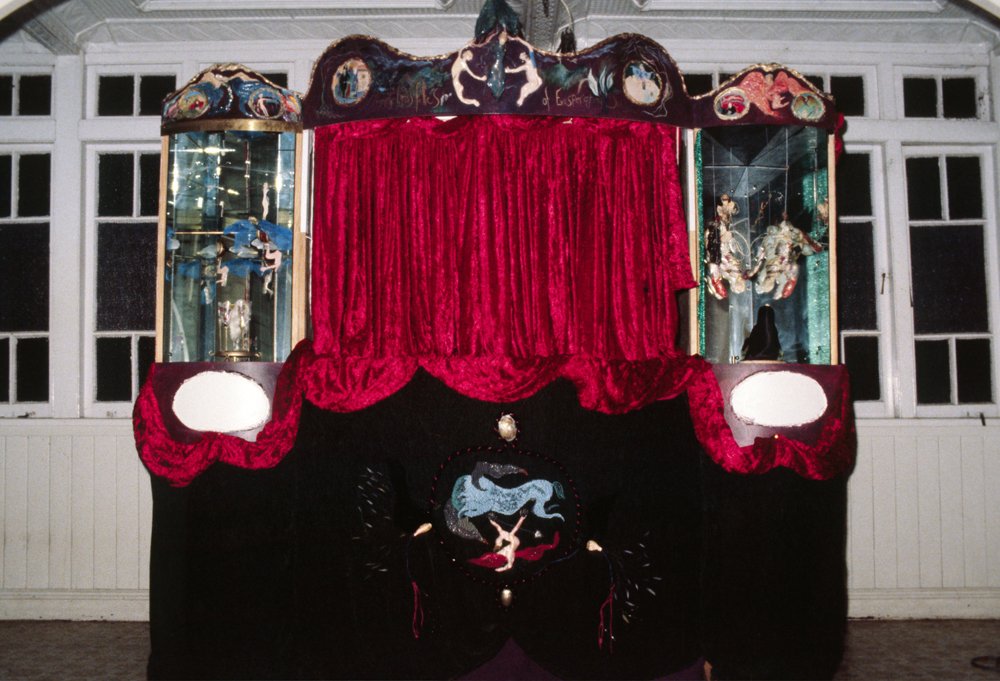
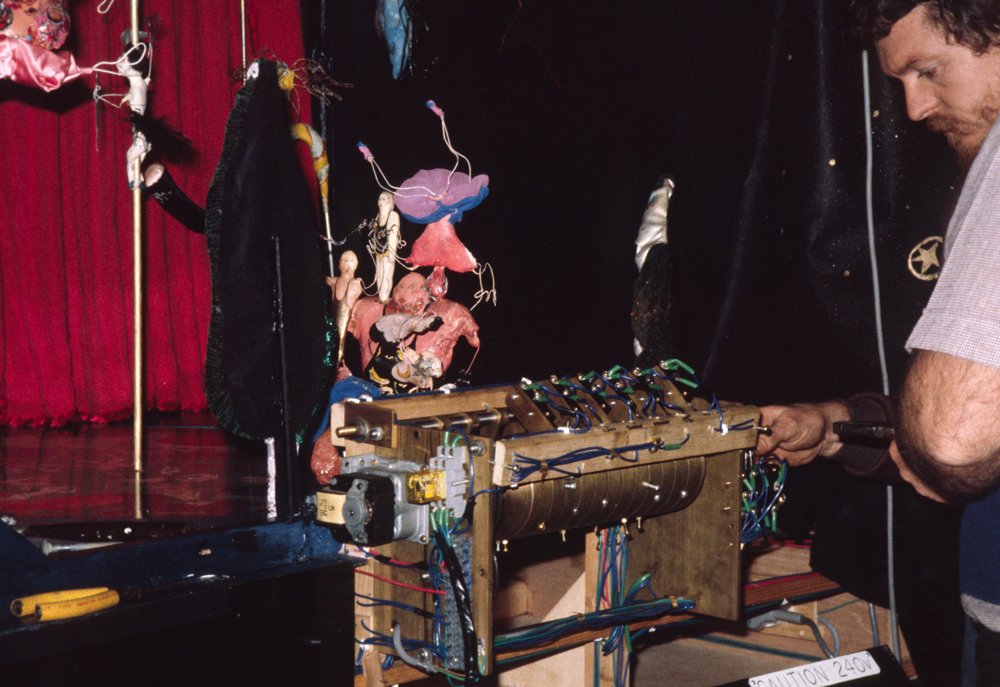
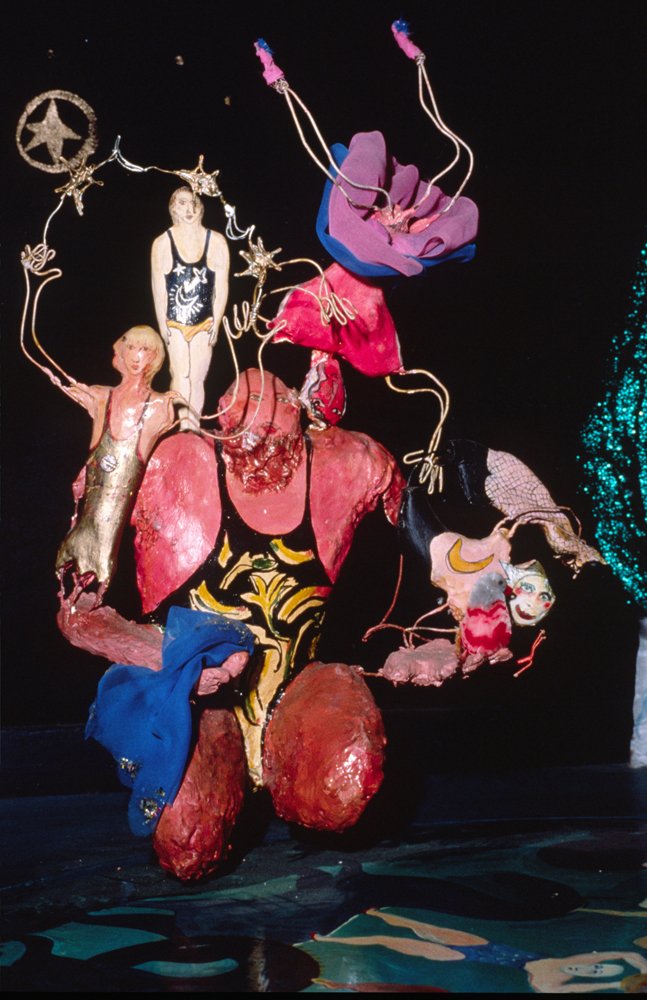
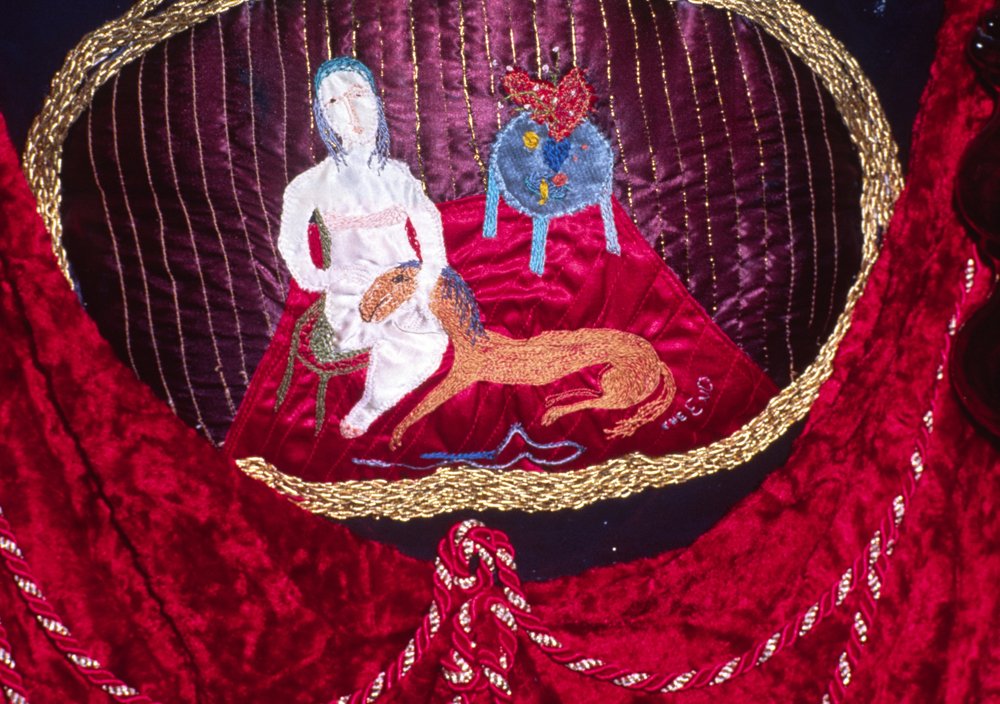

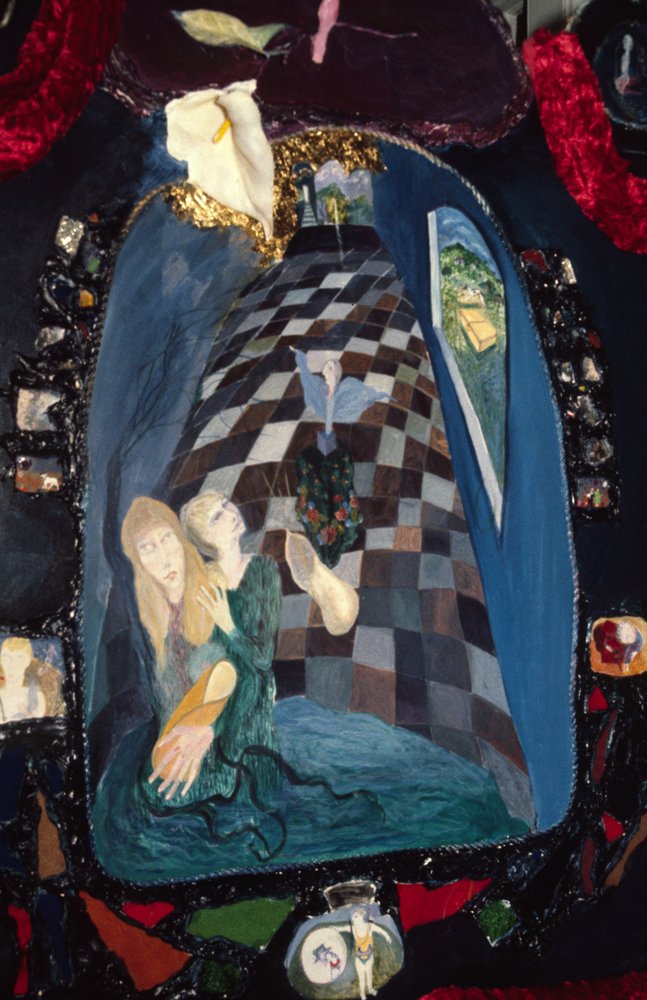
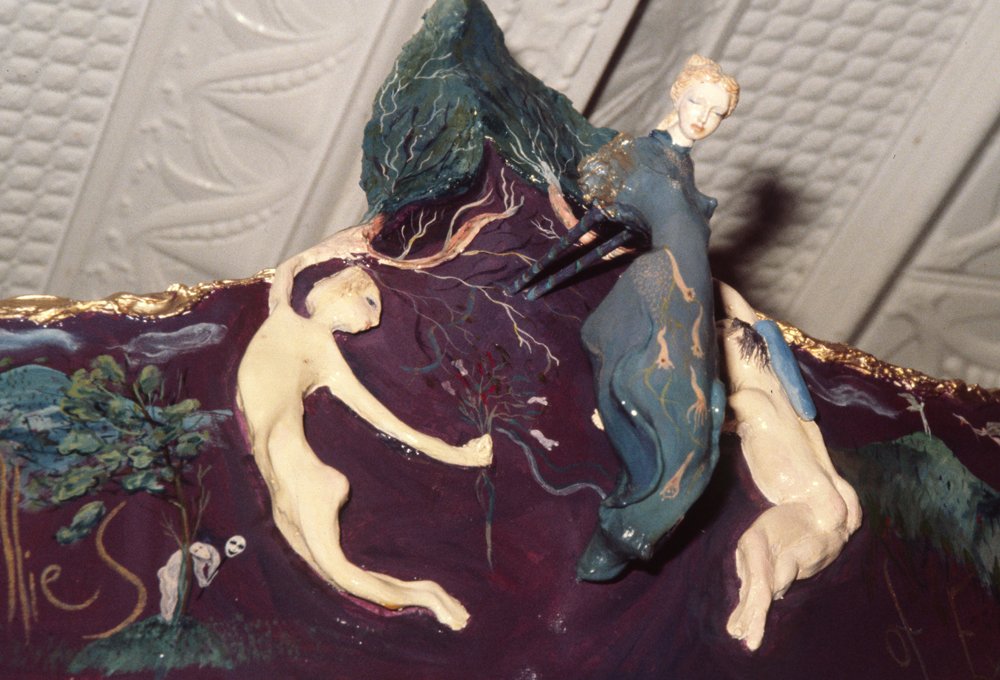

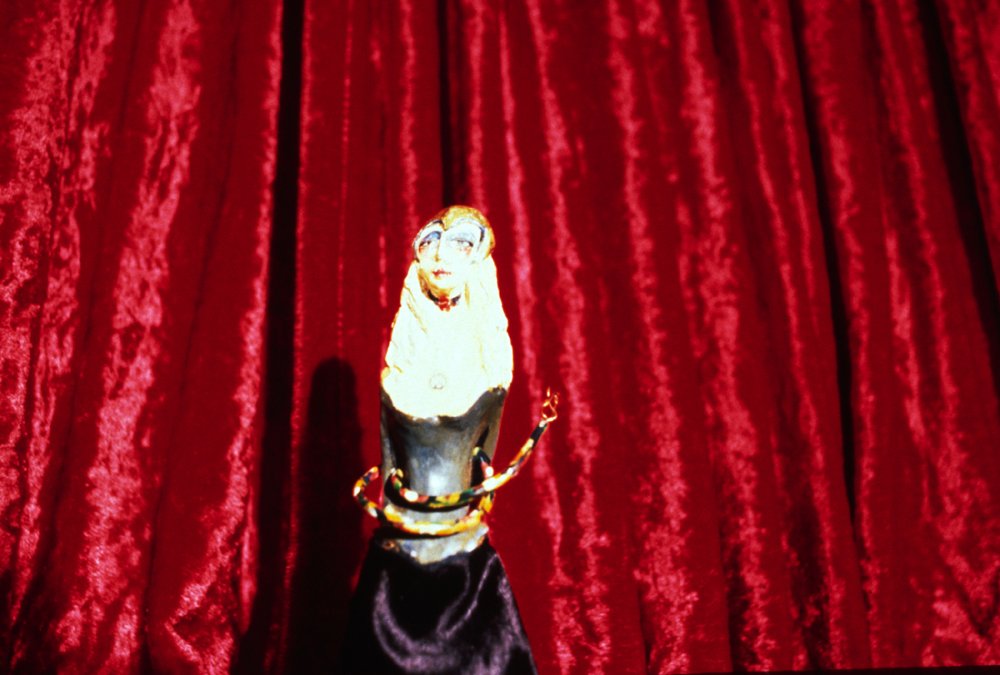

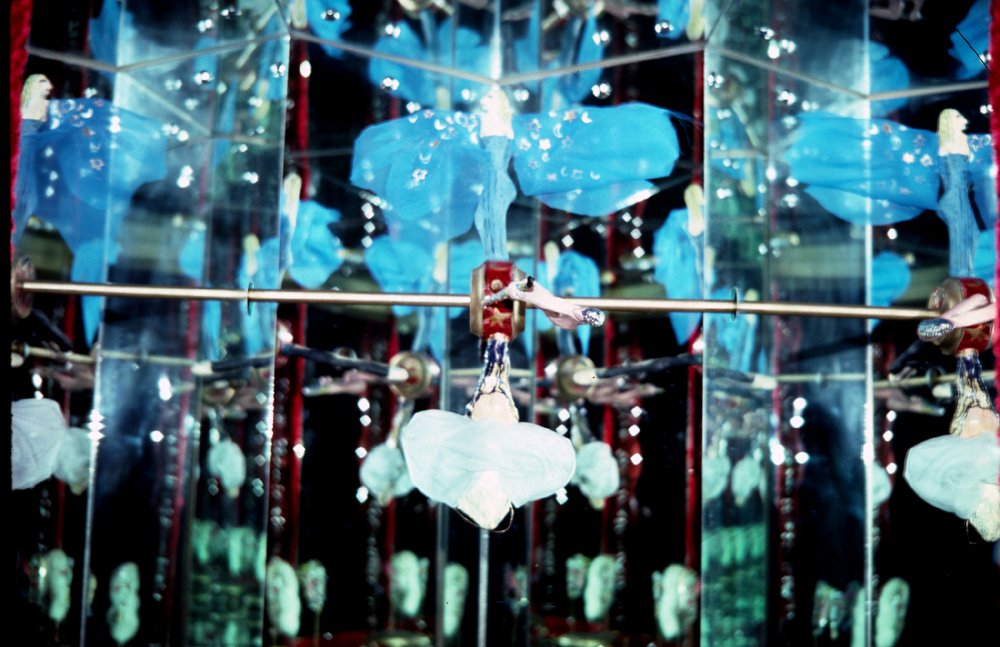
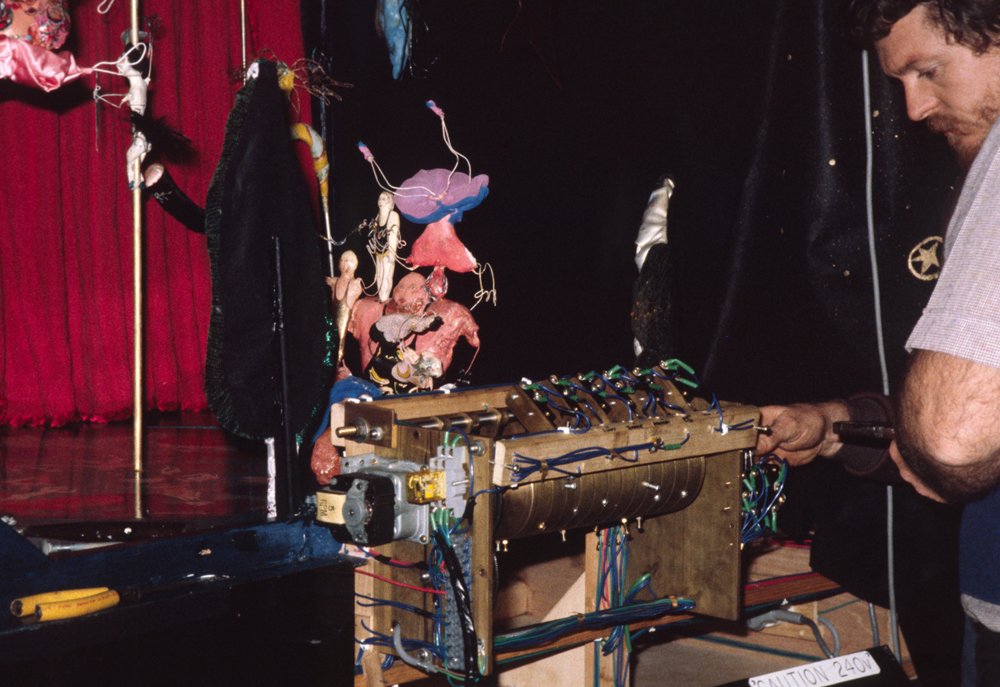

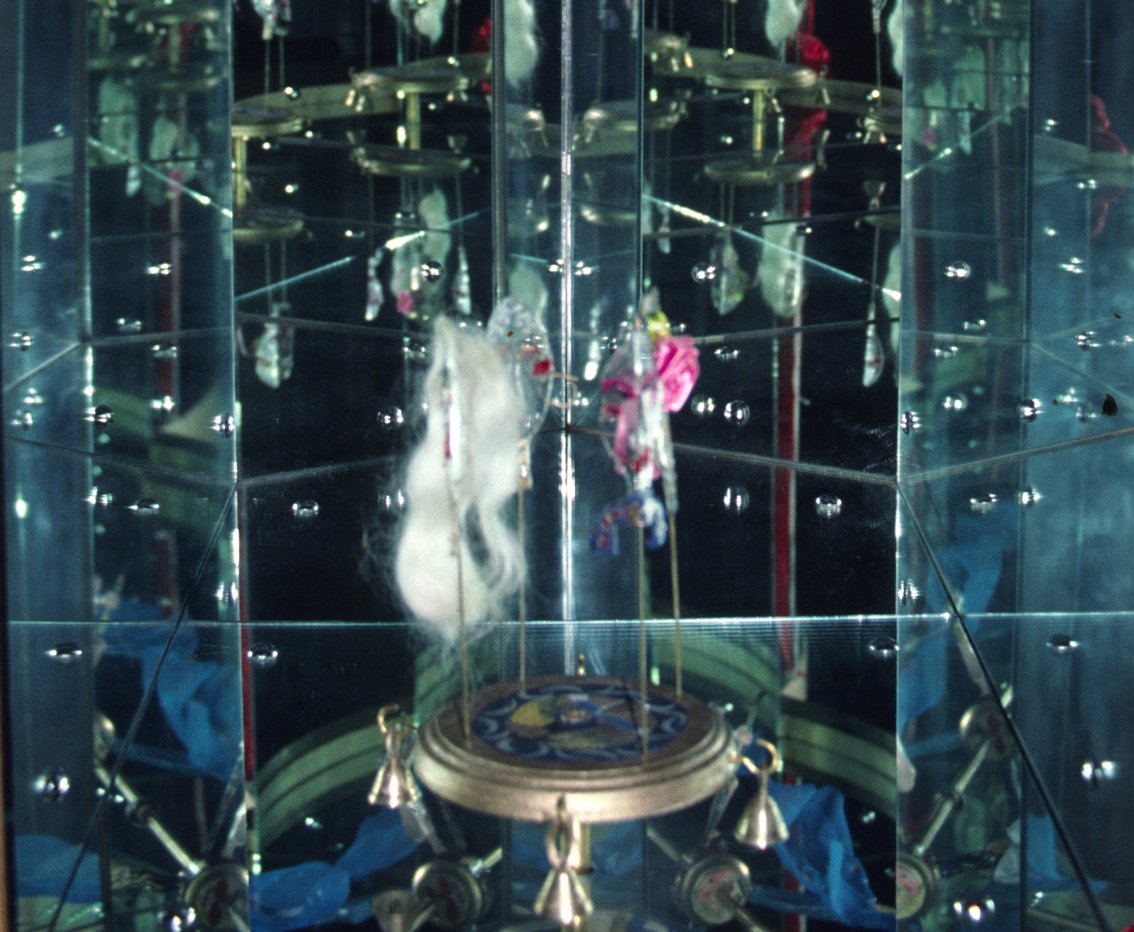
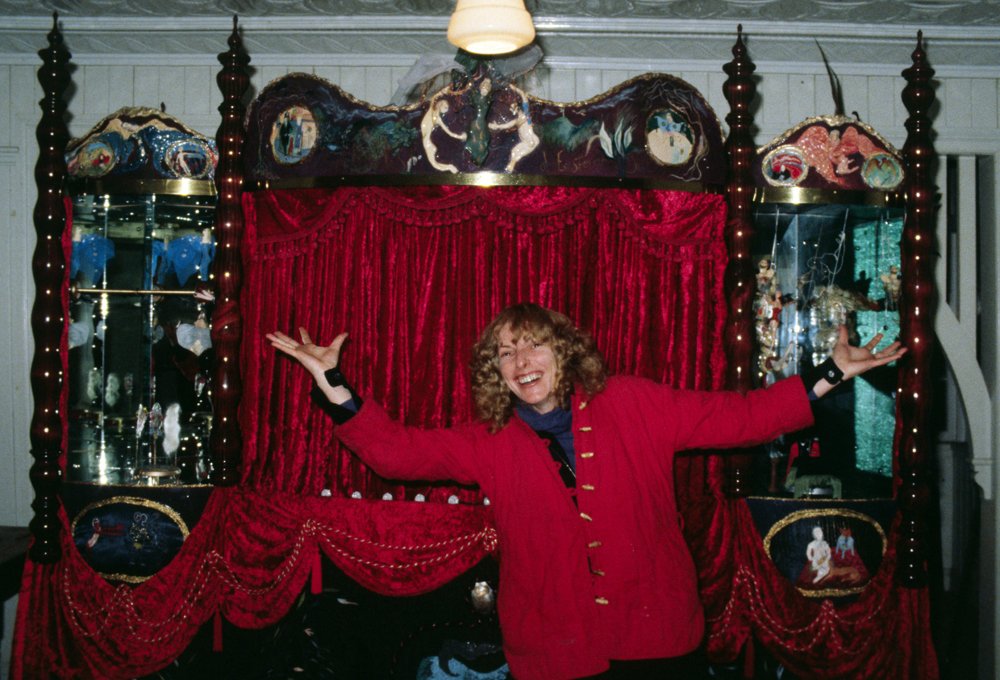
Circus Follies of Exasperating Subtlety
Circus Follies of Exasperating Subtlety is perhaps Ryder’s most significant early work. It was first exhibited in 1980 at BCAE, Brisbane College of Advanced Education (now QUT). The artwork was also exhibited in 1984 in Mona Ryder a survey, Queensland University Art Museum, in 1986 at The Queensland Performing Arts Centre, Brisbane and again in 1987 Mona Ryder: Recent Works, The Gold Coast City Art Gallery.
A description of the work:
Circus Follies of Exasperating Subtlety was a four-year project. It resembled a large mechanical music box or small theatre. There were mechanical figures, accompanying music throughout the performance, curtains that opened and closed and the entire structure was covered with paintings, gold leaf, found objects and embroideries. On the sides there were two large paintings and at the top and across the front there were vignettes and small sculptures. Fourteen figures moved, playing out their different roles. The curtains were pulled to one side by strange hooked figures.
A brass drum, situated at the back of the sculpture, operated the mechanics for the movements of the sculptures housed under the stage areas. Two shaped mirrored sections flanked the middle stage section of the sculpture producing repetitive, distorted, images of the moving figures inside.
One of the side boxes was totally mirrored internally (the sides, the ceiling and at the back formed a triangle) and the mirrors were cut and placed in a way so that the moving reflections in the mirrors appeared to go on forever. In this section four female figures (different personas) sat at right angles on a cog. On the floor, standing upright, on a painted wooden circle, were clear masks, formed from plastic continental soup cube containers. These sculptures turned continuously in the section like a kaleidoscope.
In the central section, the main stage, the lights came on as the curtains slowly opened. At the same time a bowing lady popped out of her hole in front of the curtains. She stood upright and then bowed to introduce the program then slid down into her trap door as the curtains started to open. Once opened the hooked figures held back the curtains as a red setter carrying a woman with a cat appears from one side of the stage and an angel holding a baby from the other.
As these figures moved back to their waiting areas, the central sculpture (a strongman holding his family) sitting at back of the stage moved forward slowly tracing the circle of the centre stage then back again.
Above, tracing the stage’s sky, a wire helmeted knight holding a sword leads the horse with diva side saddled. The Diva’s body naked on oneside and demurely clothed on the other. Lola Blau with her feather boa, paint brush and umbrella (Mary-Poppins-like), spins in the background.
In the third side section, one internal wall was covered in glittering green material and mirrored on the others. A magician stood at a table on a moving stand repeating his trick with a crescent moon disappearing and reappearing from his top hat. Above the magician, trapeze artists swung backwards and forwards. On the back wall an armless tattooed man moved ever so slightly.
Meanwhile the two shaped mirrored sections that flank the middle stage of the sculpture produced repetitive, distorted, images of the moving figures inside.
Holding on by her teeth, a spinning lady spun ceaselessly from the ceiling.
The curtains being held to the side by the two heads were released as the bowing lady reappears again for the final curtain call, graciously bowing again in front of the curtain and slowly retreating into her area below the stage.
Medieval and contemporary music continued to play throughout the program. The music was a combination of contemporary cabaret of that time with Reg Livermore and Robyn Archer and Chamber music. I wanted my work to encompass a number of senses and elements including interaction by the viewer.
A programme, hand-produced with etchings, linocut, watercolour and calligraphy in a limited edition of 10 accompanied the sculpture. I had also started to make a series of embroideries for around the wall of the installation.
A reflection on Circus Follies, by Mona:
Before embarking on Circus Follies of Exasperating Subtlety, I had begun to make small boxes using etching print-plates, shaped plates, prints, mirrors, lighting and sound and often included audience participation. For example, the Grey Box that was mirrored on all walls and ceiling, except one, where a print was located. When you looked through the Ned Kelly helmet hole (like a peeping Tom) and moved the box, the split-image of the print reflected back different hallways.
Drawings, paintings, prints, print-plates and sculptures were inter- related and often used together like the box pieces. After editioning prints, the plates were inked again and used in the ironing board sculptures and other works and in turn, the ironing board sculptures played out different roles in my prints and drawings. This is still happening in my work, where one thing flows on to the other and the past and present mingle. My work over the years could be one large installation.
I have always been interested in Medieval and Renaissance work, as well as religious and primitive iconology, and often combined with imagery imbedded in my Catholic upbringing. Holy cards were a source of fascination. They were often reproductions of richly coloured paintings with contradictory messages; I wanted my work to have the same effect for the viewer, to throw a punch but at the same time to be softened with a twist of humour and the seduction of surfaces. I wanted to break down the rigid media barriers in the art world at the time that often still exist. There was a craft/Art debate raging at that time that I challenged, and I am still challenging.
The work drew on common experiences of being a parent, of social and interpersonal relationships and the complexities of family life, the daily rituals and layered realities that they all bring to us. As a mother I was fascinated with children’s toys, particularly their mechanisms, both simple and complex.
Circus Follies of Exasperating Subtlety was the product of my determination to launch myself into sculpture. I wanted to produce theatrical situations where the audience felt as though they were transported or moved in some way. The original drawing for circus follies was virtually the way it finally looked. I had a very clear vision for this work.
Circus Follies became a true folly as it really required museum quality conservation, protection and on-going mechanical expertise. The fabrication created havoc and became a very costly undertaking, especially the kinetic components. Harsh practicalities presented themselves during the project and when the sculpture was ‘completed’, the arts community as group bought a computer for the sculpture; however, this only sustained the work for a limited period of time.
The Programs
Ten programs were made to accompany Circus Follies, each different. Hand-made paper, watercolour, etchings, linocuts, with red satin ribbons. Calligraphy by Judy Lookabill, photography by Don Hildred.





